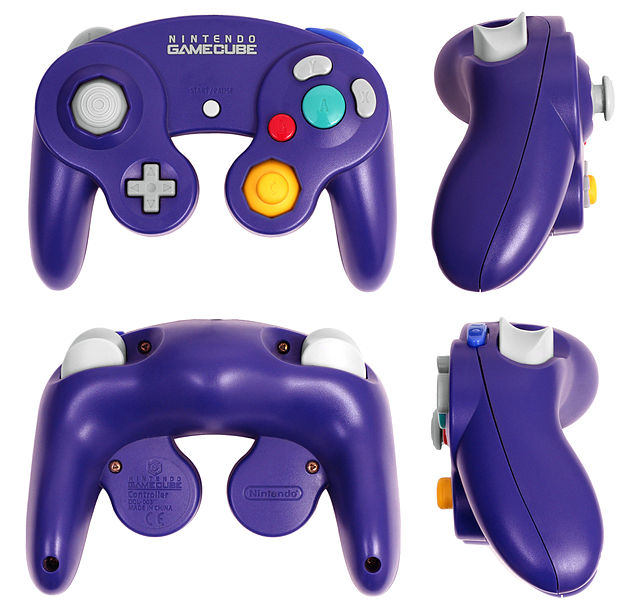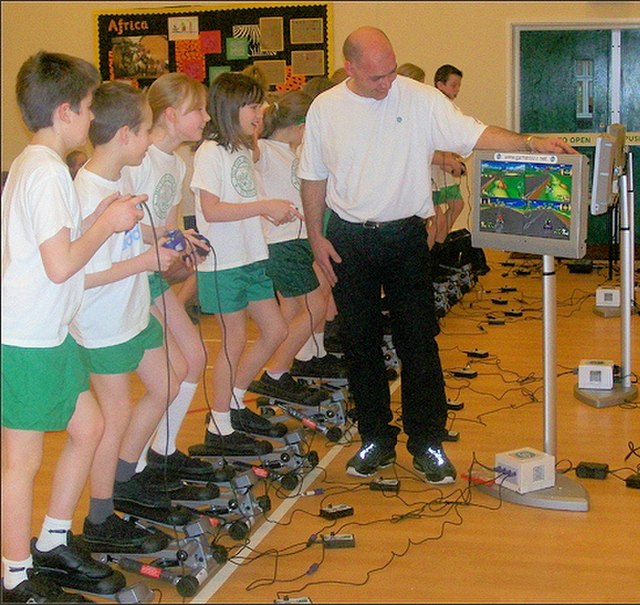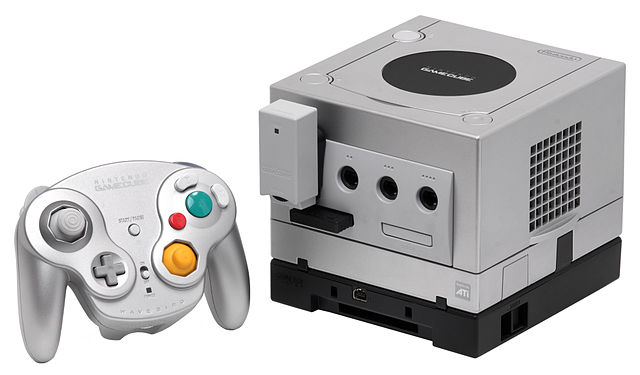The GameCube controller is the standard game controller for the GameCube home video game console, manufactured by Nintendo and launched in 2001. As the successor to the Nintendo 64 controller, it is the progression of Nintendo's controller design in numerous ways. The contentious M-shaped design of its predecessor was replaced with a more conventional handlebar style controller shape; a second analog stick was added, replacing the C buttons with a C stick and the X and Y face buttons, last seen on the Super Nintendo controller, were reintroduced; the shoulder buttons were changed to hybrid analog triggers. A wireless variant of the GameCube controller known as the WaveBird was released in 2002.
Indigo GameCube controller from various angles
Platinum WaveBird controller with its receiver module
The LodgeNet GameCube controller
The prototype GameCube controller that was included with the development system, with its buttons adopting a color scheme similar to that of the Nintendo 64 controller.
The GameCube is a home video game console developed and marketed by Nintendo. It was released in Japan on September 14, 2001, in North America on November 18, 2001, in Europe on May 3, 2002, and in Australia on May 17, 2002. It is the successor to the Nintendo 64 (N64) and the predecessor to the Wii. As a sixth-generation console, the GameCube primarily competed with the PlayStation 2 and the original Xbox.
System with controller and memory card
A group of schoolchildren exercise while playing the GameCube in Hilton, Derbyshire.
A Platinum GameCube with a WaveBird Wireless Controller and Game Boy Player attached
Indigo GameCube controller







